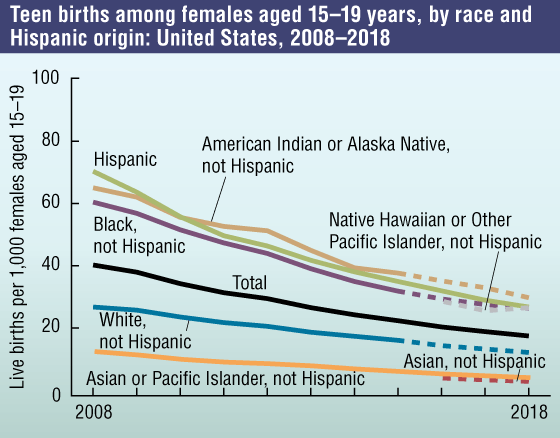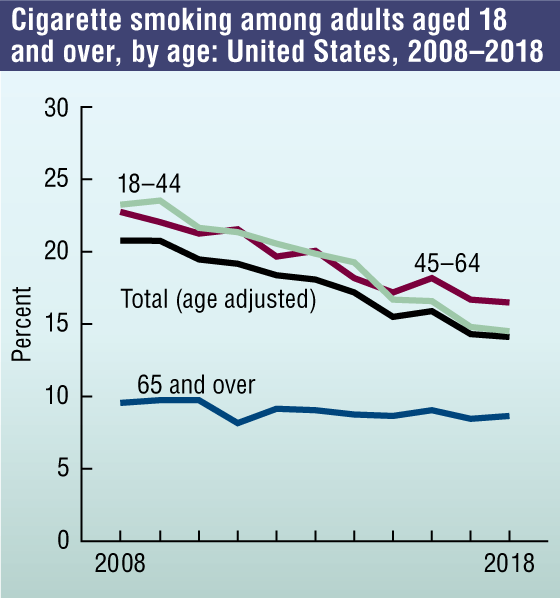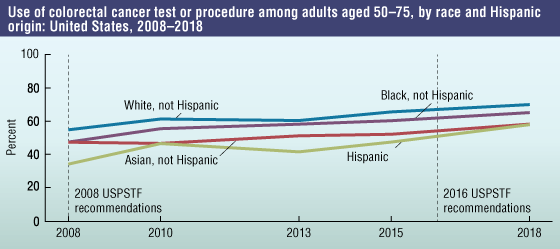Health, United States, 2019
NCHS Fact Sheet, March 2021
About NCHS
The National Center for Health Statistics (NCHS) is the nation’s principal health statistics agency, providing data to identify and address health issues. NCHS compiles statistical information to help guide public health and health policy decisions.
Collaborating with other public and private health partners, NCHS uses a variety of data collection mechanisms to obtain accurate information from multiple sources. This process provides a broad perspective on the population’s health, influences on health, and health outcomes.
Health, United States
Health, United States, 2019 is the 43rd edition of the congressionally mandated annual report from the Secretary of Health and Human Services to the President and Congress of the United States about trends in health challenges facing the nation. The report includes data from a variety of federal government and private-sector sources, organized around four major subject areas: health status and determinants (i.e., life expectancy, infant mortality, leading causes of death, overdose deaths, teen births, preterm births, use of tobacco products, asthma, hypertension, and functional limitations); health care utilization (i.e., unmet medical needs); health care resources (i.e., availability of physicians and dentists); and health care expenditures and payers.
Selected Findings
Mortality and natality
- In the United States, life expectancy at birth was 78.7 years in 2018, 0.5 year higher than in 2008.
- From 2008 to 2018, the age-adjusted all-cause death rate decreased 7% among both males (from 918.8 to 855.5 deaths per 100,000 population) and females (from 659.9 to 611.3 deaths per 100,000 population).
- From 2008 to 2018, the age-adjusted drug overdose death rate increased from 11.9 deaths per 100,000 in 2008 to 20.7 in 2018.
- From 2008 to 2018, the age-adjusted suicide rate increased from 11.6 to 14.2 deaths per 100,000 population; the rates were higher among males than females each year.
- In 2018, the maternal mortality rate was 17.4 deaths per 100,000 live births (658 deaths).
- The birth rate among teenagers aged 15–19 years was 17.4 live births per 1,000 teens in 2018—a record low for the
United States.

NOTES: Starting with 2016 data, race-specific estimates (dashed lines) are tabulated according to the 1997 “Revisions to the Standards for the Classification of Federal Data on Race and Ethnicity” and are not strictly comparable with estimates for earlier years. In 2016, the Asian or Pacific Islander group was split into two different race groups: Asian and Native Hawaiian or Other Pacific Islander. To look at longer trends, bridged-race estimates for the combined Asian or Pacific Islander group are also presented. Persons of Hispanic origin may be of any race.
SOURCE: NCHS, National Vital Statistics System, Natality.
Tobacco product use
- Cigarette smoking among adults continued to decline. The age-adjusted percentage of adults aged 18 and over who smoked cigarettes decreased from 20.6% in 2008 to 13.9% in 2018, and decreasing trends were observed across all age groups.
- From 2011 to 2018, the percentage of students in grades 9–12 who smoked cigarettes in the past 30 days decreased from 15.8% to 8.1%, while the percentage who used electronic cigarettes increased from 1.5% to 20.8%.

NOTE: Current cigarette smoking by adults is defined as ever smoking 100 cigarettes in their lifetime and smoking now every day or some days.
SOURCE: NCHS, National Health Interview Survey.
Health care resources and expenditures
- In 2018, personal health care expenditures in the United States totaled almost $3.1 trillion—a 4.1% increase from 2017.
- The percentage of children under age 18 years who were uninsured in 2018 was 5.2%, and the percentage of adults aged 18–64 who were uninsured was 13.2%.
Health care access and utilization
- The percentage of adults aged 50–75 who fulfilled colorectal cancer screening recommendations increased from 2008 to 2018 for all race and Hispanic-origin groups. In 2018, colorectal cancer screening was reported by 69.9% of non-Hispanic white, 65.2% of non-Hispanic black, 58.2% of non-Hispanic Asian, and 57.9% of Hispanic adults aged 50–75.
- In 2018, 11.7% of adults aged 26–64 delayed or did not receive needed medical care due to cost compared with 8.6% of adults aged 19–25, 5.3% of adults aged 65 and over, and 2.9% of persons under age 19.

NOTES: USPSTF is U.S. Preventive Services Task Force. Data on cancer screening are collected intermittently, not annually. For 2008–2013 estimates, use of a colorectal cancer test was defined as reporting a fecal occult blood test (FOBT) in the past year, sigmoidoscopy in the past 5 years with FOBT in the past 3 years, or colonoscopy in the past 10 years. For 2015 estimates, fecal immunochemical test (FIT) in the past year was included in the definition of colorectal cancer testing. For 2018 estimates, use of a colorectal cancer test is defined as FOBT or FIT test in the past year, FIT-DNA test in the past 3 years, sigmoidoscopy in the past 5 years, computed tomography or CT colonography in the past 5 years, or colonoscopy in the past 10 years. Race-specific estimates are limited to those reporting only one racial group and tabulated according to the 1997 “Revisions to the Standards for the Classification of Federal Data on Race and Ethnicity.” Persons of Hispanic origin may be of any race.
SOURCE: NCHS, National Health Interview Survey.
For more information about NCHS and its programs, visit https://www.cdc.gov/nchs.
For more information about Health, United States, visit https://www.cdc.gov/nchs/hus.htm.